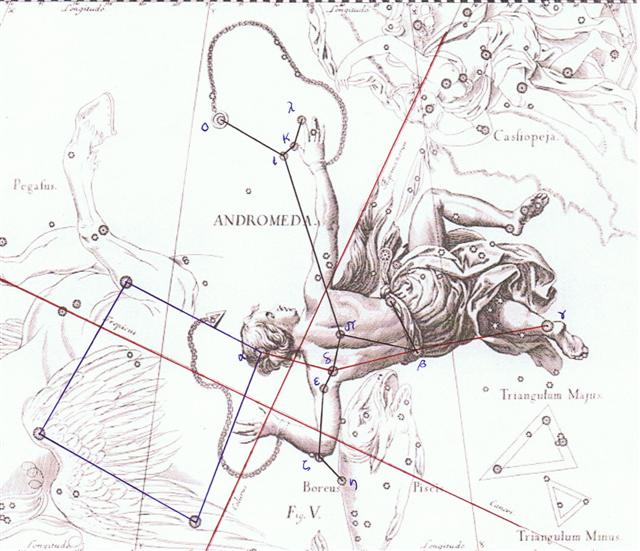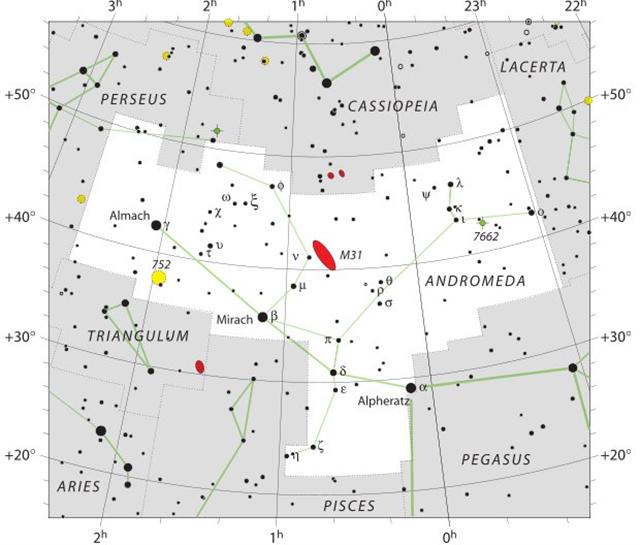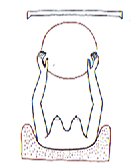Once again. Due to the precession the Sun with its cardinal points had come earlier and earlier as measured against the stars.
I had assumed the beginning of the C text was defined from the positions of the stars at the time of rongorongo, with heliacal Sirrah at March 21 and with Polaris arriving 26 days later followed by Sheratan at Ca2-1 (and also at Cb1-1).
This is still a plausible interpretation of the text. However, there could be another and less obvious reading:
The latter reading corresponds to the time of Gregory XIII - with the Sun in ºMarch 21 at such stars as θ, σ, and ρ Andromedae - updated with 3 days for the precession since the time of the 'birth' of the Gregorian calendar to the time of the 'rebirth' of the island as San Carlos in 1770 AD.
Against the fixed structures of the Julian and Gregorian calendars the stars were moving ahead in the year. And sometimes the great stars of the past were gliding into positions which were in harmony with the traditions of old. At the time of Julius Caesar the autumn equinox was where the Sun reached Thuban, in 'September 22 (265) and with Alrisha close to the Full Moon. This fact could easily be deduced from the speed of the precession. The head in Ca1-26 was probably meant as a contrast to what we can see at the beginning of the next line (which is upside down), where a newly baked 'stone' is pushed high.
In other words, my first reading of the C text was based on a simple model in form of a one-one correlation between the dates of our Gregorian calendar (my right ascension days) and the heliacal positions of the stars at my assumed time for rongorongo. But my other reading now seems quite plausible, because it goes back to the time of the birth of the Julian calendar, where Thuban could have remained in thought as the star at the pole - supporting α Pisces (Alrisha, the Knot) at its position at the final of the old Sun, and with α Arietis (Hamal) as leader of the new Sun cycle. ... Strassmeier and Epping, in their Astronomishes aus Babylon, say that there its stars formed the third of the twenty-eight ecliptic constellations, - Arku-sha-rishu-ku, literally the Back of the Head of Ku, - which had been established along that great circle milleniums before our era; and Lenormant quotes, as an individual title from cuneiform inscriptions, Dil-kar, the Proclaimer of Dawn, that Jensen reads As-kar, and others Dil-gan, the Messenger of Light. George Smith inferred from the tablets that it might be the Star of the Flocks; while other Euphratean names have been Lu-lim, or Lu-nit, the Ram's Eye; and Si-mal or Si-mul, the Horn star, which came down even to late astrology as the Ram's Horn. It also was Anuv, and had its constellation's titles I-ku and I-ku-u, - by abbreviation Ku, - the Prince, or the Leading One, the Ram that led the heavenly flock, some of íts titles at a different date being applied to Capella of Auriga. Brown associates it with Aloros, the first of the ten mythical kings of Akkad anterior to the Deluge, the duration of whose reigns proportionately coincided with the distances apart of the ten chief ecliptic stars beginning with Hamal, and he deduces from this kingly title the Assyrian Ailuv, and hence the Hebrew Ayil; the other stars corresponding to the other mythical kings being Alcyone, Aldebaran, Pollux, Regulus, Spica, Antares, Algenib, Deneb Algedi, and Scheat ...
|
||||||||||||||||||||||||||||||||||||||||||||||||||||||||||||||||||||||||||||||||







